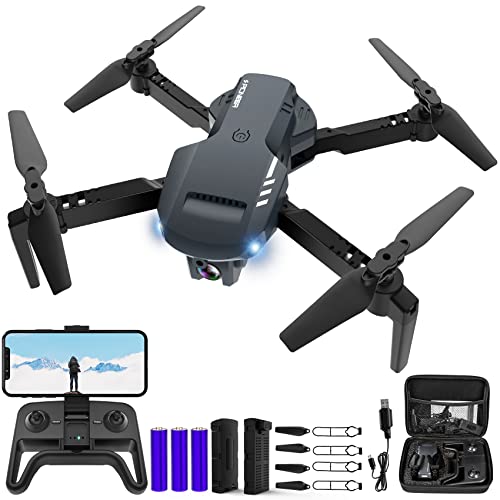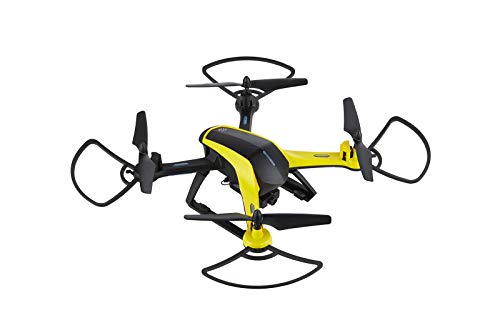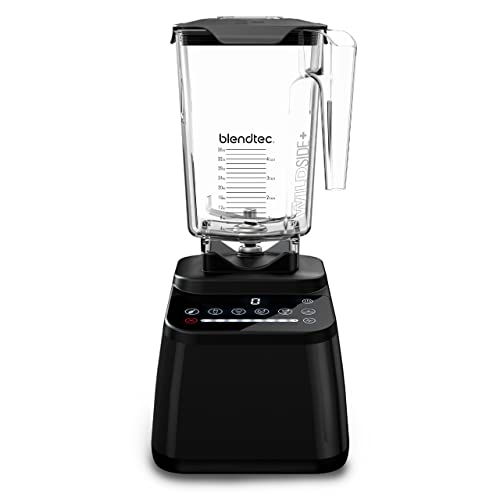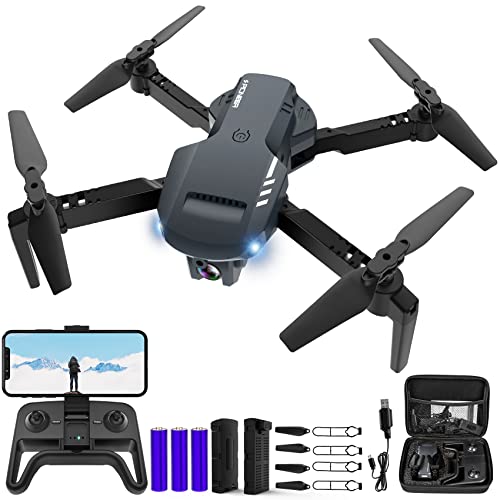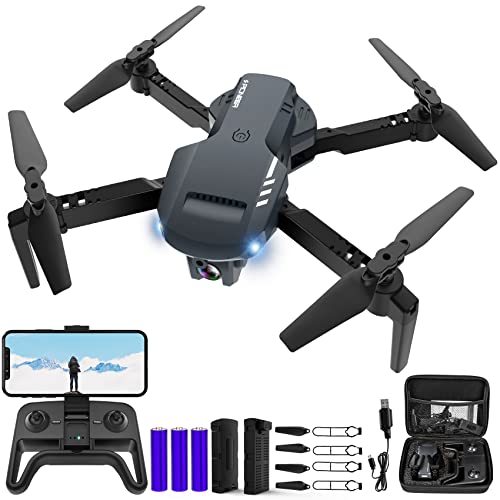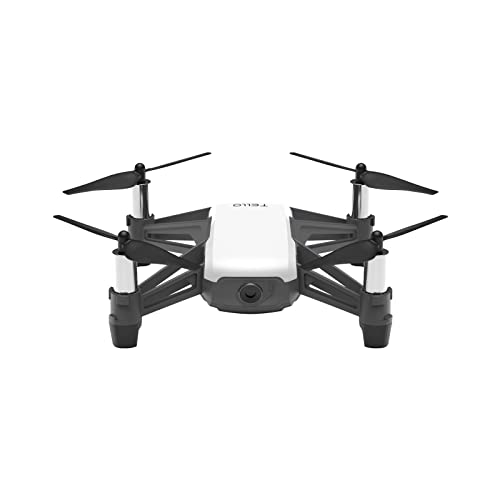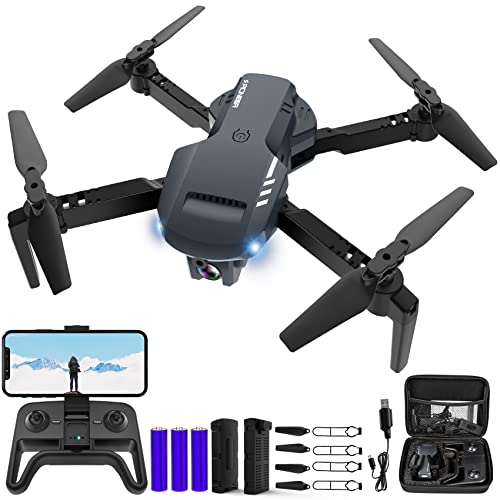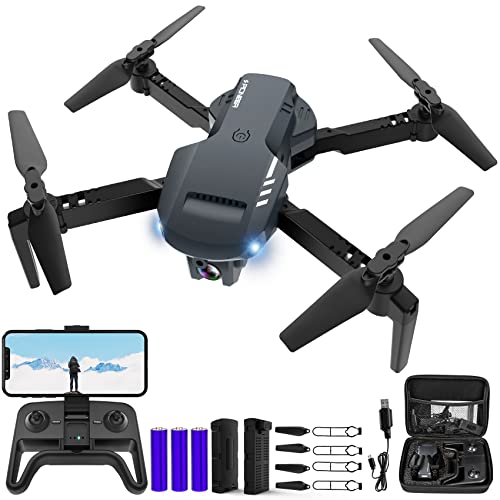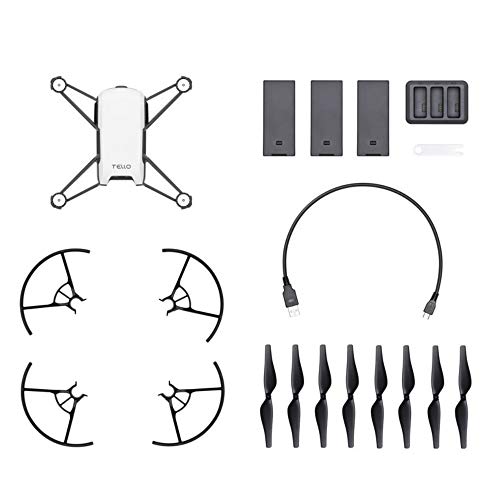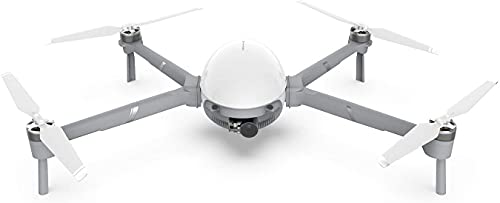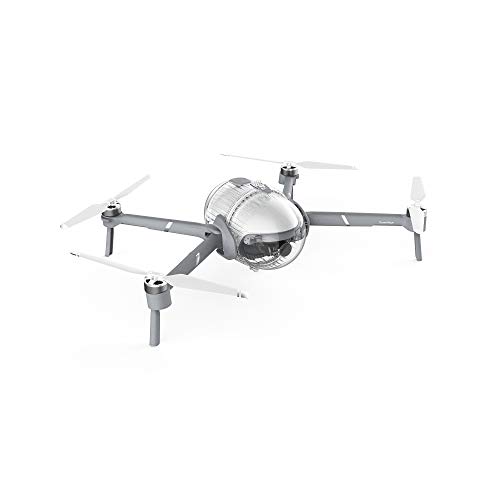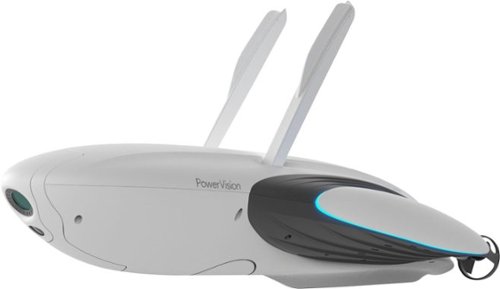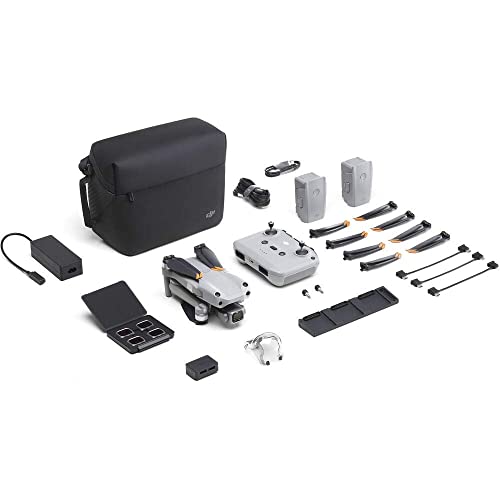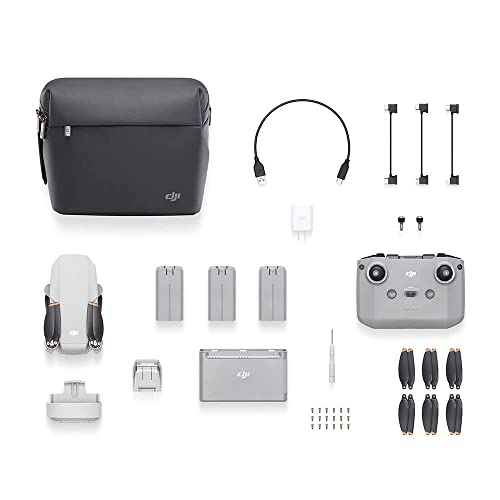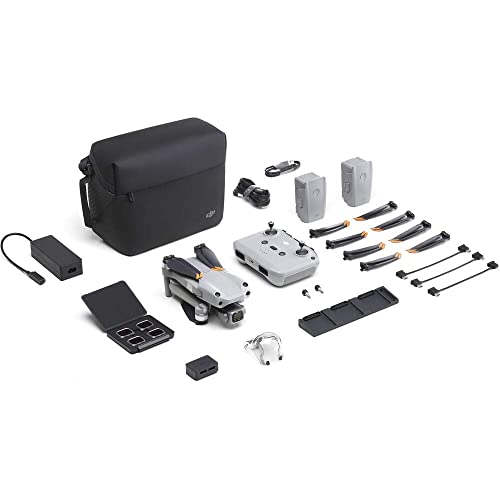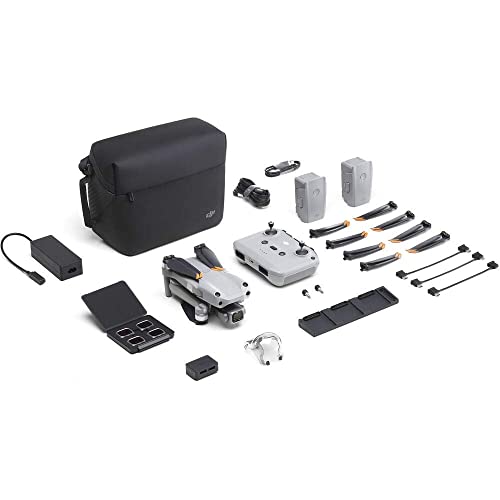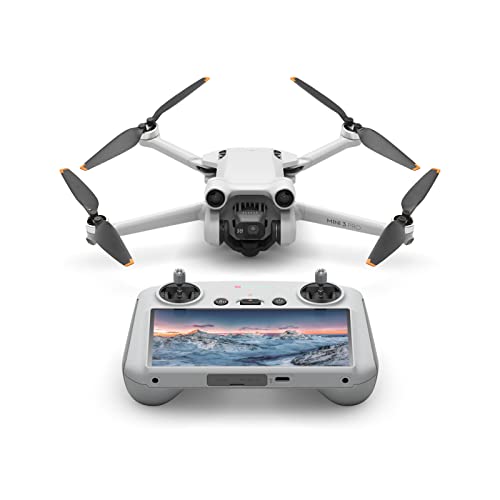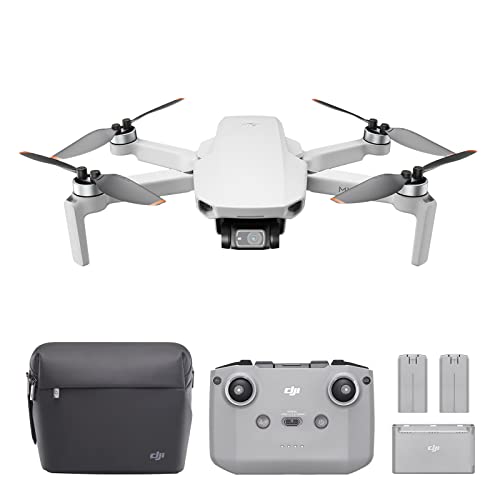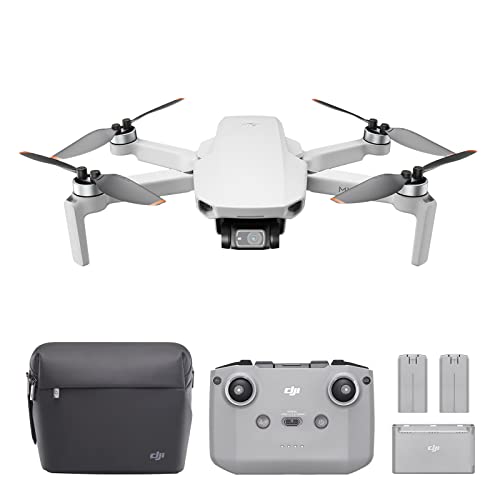If you’re looking for the best underwater drones we’ve done a deep dive by spending more than 25 hours researching the web, speaking to experts, and scouring retailers to find out which models are the best submersible drones out there. We narrowed it down to models that were capable of diving at least 20 meters down, and which include cameras capable of full HD video–with bonus points for 4K–and which have a battery life of at least an hour, so you can actually do some exploring. The best drones give you ample time to have fun with them. If you want to learn more about the best underwater robot, read on.
Our top pick, the PowerVision Powerray Wizard, not only offers a 4K capable camera, but includes useful features like a fish finder with onboard sensors and sonar, plus VR goggles that let you virtually explore the deep.
Top 7 Best Underwater Drones Compared
#1 PowerVision PowerRay
Award: Top Pick
WHY WE LIKE IT: A 4K underwater drone with a 230-foot tether and VR goggles, plus useful fishing tools like the removable PowerSeeker fish finder unit, it’s also less expensive than most of the submersibles on our list. It’s great for fishermen looking to go high-tech and get super accurate bait and fish hook placement, as well as for anyone seeking a way to explore the under the sea from the comforts of the deck via virtual reality. This could be one of the best drones for fishing.
- Best value
- Provides data on water temp, fish distribution and depth
- VR goggles included
- Not as deep or long-range as the Tether Titan (our #2 pick)
- Initial set up requires a rather clunky online process
- Limited compatibility for the iPhone app
Not just a novelty or entertainment gadget, though it can be entertaining too, this type of drone is a useful tool for fishing, treasure hunting, and even scientific research. Secured via a 230-foot tether, it communicates over a WiFi signal and features an array of sensors in the included modular fish finder unit. A magnetic bait drop and fishhook placement let you place your hook precisely where the fish are biting.
Related: Check out our best drone GoPro guide.
The PowerRay also comes with a 12 MP camera that shoots 4K Ultra HD video, letting it capture high-quality footage of the underwater world, so it may not be the best selfie drone. It also has two 450-lumen lights for clear visibility underwater. As with some flying drones, the control is via Great for reefs and near-surface open waters, the camera has a wide 180+ degree field of view and you can even see the footage in real-time (It’s stored in the 64GB memory card) as you navigate the PowerRay using the included VR goggles. Also, with the ZEISS VR ONE goggles, you can enjoy live footage in virtual reality. This feature should make it appealing to educators, boaters, and commercial inspectors too. Even underwater archaeologists may find this ROV useful. The PowerRay can store 64 GB worth of footage or stream in real-time in 1080p. This will bring your live video feed capabilities to a whole new level. Plus, its battery lasts up to four hours on a single charge, longer than most other underwater drones on our list. Its control is somewhat similar to an aerial drone. For cameras without a drone, check out the best digital camera.
#2 Tether Titan
Award: Honorable Mention
WHY WE LIKE IT: The deepest diving underwater drone on our list, able to reach depths of 150M (492 ft,) this high-tech ROV also offers 4K video, 64 GB storage, and an easy-to-use smartphone app. It’s great for underwater videographers, small salvage operations, and content creators looking to get high-quality shareable footage of fish, scuba divers, sunken ruins, and more.
- Deepest Dives (492 ft)
- 4 Hour battery life
- 4K 30p video with a bright f2.5 lens
- More expensive than most other consumer ROVs
- Doesn’t come with built-in illumination
- UX for the smartphone app lacks a map view
The Geneinno Titan is easily one of the most impressive underwater drones on the market. It can dive to a remarkable 492 ft, and it also comes with the longest tether (150m) of any of the wired underwater drones on our list. With the capability to dive 150 meters underwater, you will soon be able to upgrade the quality of your underwater content. It has a four-hour battery life and uses six independent multi-directional thrusters for movement, letting it explore at around 4 knots depending on the current. Battery life matches that of the PowerRay, rated at 4 hours.
Related: Also see our best VR drone.
The camera shoots 4K video at 30 p and, like our top pick, the PowerRay, it can stream in real-time at 1080p or store up to 64 GB of footage for later retrieval. Control is via an included smartphone app, compatible with iOS and Android, and with a user interface that will be intuitive and easy to master for anyone familiar with flying drones. That said, it doesn’t take any particular expertise to set up this drone, despite its impressive capabilities. Thanks to the Geneinno Titan’s deeper diving, excellent maneuverability, and rugged construction, this ROV is useful for underwater exploration, archaeology, treasure hunting, coral reef viewing, and more. For more down-to-Earth photography, check out the best waterproof cameras and the top-rated waterproof drones.
#3 Chasing GM0001 Gladius
Award: Best 4K
WHY WE LIKE IT: A high-quality 4K camera, built-in lighting, and an innovative floating Wi-Fi base station make this easy-to-use underwater drone a cool choice for capturing beautiful undersea footage. It’s great for videographers looking to get footage offshore, where the convenience of its floating WiFi buoy comes in handy.
- Captures 4K
- Wifi controlled via a floating base station
- Intelligent pitch control and depth lock mode for stable footage
- Not as deep diving as the Tether Titan– though it reaches a still-impressive 100m
- Battery life only 2 hours compared to the 4 hr of the PowerRay (our top pick)
- Framing shots via the app can be challenging
The Gladius mini is a 4K capable underwater drone that offers extended exploration range and flexibility thanks to its included WiFi base station buoy. This gets around the problem of WiFi signals not reaching very far in water. This isn’t a problem unless your drone lands in the water. The Gladius attaches to the buoy via a 100m tether and is capable of diving up to 100m down. Useful for videographers, it has an intelligent depth and angle lock mode that helps get steady footage. It shoots 4K video and captures 12 MP stills, and as with the PowerRay (our top pick), it can stream in real-time albeit at a reduced 1080p resolution, and can be controlled via an included smartphone app, compatible with iOS and Android.
This innovative ROV may not dive as deep or for as long as the Tether Titan (our #2 pick) but it does have some stand-out features that make it a useful tool for exploration and photo or videography. The floating base station gives you more freedom of movement and the built-in lights let you capture better quality underwater footage. Also, check out the best underwater camera.
#4 QYSEA FIFISH V6
Award: Best for Underwater Caves
WHY WE LIKE IT: Patented smart thrusters make it among the most maneuverable and easy to pilot underwater drones on the market. Plus, it offers 4k UHD video, LED lights, and exceptional 4.5-hour battery life. It’s great for oceanography educators, students, and undersea videographers looking for an intuitive, easy-to-use underwater drone to capture great, well-lit footage.
- 6 Thrusters for omni-directional movement
- The brightest lights (4000 lumen) of any drone on our list
- 4.5 hour battery life
- Not as fast (3 knots max) as the Tether Titan (our #2 pick)
- No wifi base station as with the Gladius (our #2 pick) limiting range somewhat
- More expensive than the PowerRay (our Top Pick)
This versatile underwater drone stands out for its unique Omni-directional maneuverability. A patented smart thruster system using 6 independent thrusters lets it spin 360 degrees, roll and pitch at any attitude, helping to get the exact right shot every time. Another plus for videographers and undersea photographers is the FIFSH V6’s 4000-lumen built-in lights, brighter than the lights on the Gladius (our #3 pick.)
The V6 also, like many of the top underwater drones, shoots 4K video and offers a good 166-degree field of view. It’s great for divers and explorers, with its durable 100kg Kevlar tether and advanced maneuverability coming in handy for such uses as exploring shipwrecks and coral reefs. If you’re looking for another method of underwater exploration, take a look at the robots offered by Deep Trekker. The QYSEA FIFISH V6 also comes with the option of live streaming to immersive VR, but unlike the PowerRay, it doesn’t come with VR goggles. If you want to take photos from the ground, the best mirrorless camera may be the way to go.
#5 Genuine Poseidon I Underwater Drone
Award: Longest Battery Life
WHY WE LIKE IT: A compact underwater ROV with a 120-meter dive rating and an included 2.4GHz WiFi buoy, the Poseidon I is also small enough to carry with you on an airplane. It’s great for adventurers and world travelers, with a shape that’s convenient to pack up and carry with you.
- 5 hour battery life
- 120M dive rating, deeper than the PowerVision PowerRay
- Comes with a floating WiFi base station
- Camera’s video resolution maxes out at 1080p, less than the other drones on the list
- Narrower field of view (120 degrees) than the FiFISH V6
- More expensive than the PowerRay
This sleek and relatively compact underwater drone from Geneinno is well suited for capturing photos and videos of snorkeling, scuba diving, and yachting trips. It may not have quite the depth of the Tether Titan (our #2 pick) or the Omni-directional control of the FIFISH V6 (our #4 pick) but it does have a very long, up to five-hour battery life, and scoots through the water at a relatively sprightly 4 knots.
Among the drawbacks is the lack of 4K resolution, though the Poseidon does benefit from built-in lighting and its 1080p footage does use a smart white-balance feature to optimize the quality at different depths, giving some very clear and nice footage. It uses the Geneinno app for IOS or Android, and is available on Amazon. Speaking of nice footage, the best 3D camera will deliver. Compare this with the Geninno Titan Underwater ROV if you want to go with a pricier pick.
#6 Nemo 4K
We’re sorry, this product is temporarily out of stock
Award: Best for Live Viewing
WHY WE LIKE IT: A patented balance system, VR capability, and outstanding 16 MP stills are some of the draws for this innovative, partially crowdfunded underwater drone. It’s great for underwater photographers, scuba divers, and anyone looking for a truly unique way to experience the undersea kingdom, thanks to the Nemo’s unique 4K Livestream.
- Livestream 4K
- 16 MP stills, higher resolution than any other drone on the list
- QAS dynamic balance system
- 3 hour battery life shorter than with the FIFISH V6 or the Poseidon I
- As with most tethered underwater drones, requires a smartphone controller above water
- Relatively new, low volume company so service may require mail-in
The Nemo 4K, named after Jules Verne’s submarine captain or else an animated fish that got lost (take your pick) is a well-designed and innovative underwater drone aimed at scuba divers and adventurous underwater photo/ videographers. It benefits from great image quality thanks to a 16 MP camera that can shoot stabilized 4K video. You view the live stream/video feed on the Nemo app installed on your iPhone, smartphone, or tablet. It also has built-in lights, though at 1000 lumens they don’t quite have the range of the FIFISH V6’s headlights.
The Nemo’s 48Wh/12V battery is said to last around three hours, which isn’t quite as long as the 4.5-hour battery of the Tether Titan. However, the Nemo’s battery is modular and designed to be easily swapped out for a spare you can keep charged on the boat or shore. This will be easy to take along with you to the best dive sites in the United States. Also, have a look at the best camera for filmmaking on a budget.
#7 Robosea BIKI
We’re sorry, this product is temporarily out of stock
Award: Best Budget
WHY WE LIKE IT: An underwater drone that swims like a fish, the Robosea BIKI is compact and fun, and includes a 4K video camera, underwater remote control, and several AI-assisted swimming modes. It’s great for kids, divers, and early adopters looking for one of the first true “intelligent” underwater drones.
- Underwater remote
- 4K capable camera
- Built-in GPS and intelligent navigation
- Less onboard data storage-32GB-than some underwater drones
- Batteries can’t be swapped out as with the Nemo
- Limited range compared to the Poseidon or Nemo
This cute underwater drone is billed as the world’s “first bionic fish.” Unlike the other underwater drones on our list, the Robosea BIKI swims by moving a “tail fin” back and forth, like a fish, rather than being propelled by thrusters. The BIKI also lacks a tether and instead uses a combination of above-water wifi and an underwater remote. It can be set to maintain a fixed position for filming or to swim around on a programmed course as well. Obstacle avoidance sensors allow some autonomy.
A 4K camera with lights and a wide-angle lens helps the BIKI get quality underwater video.
Great for taking on vacations and exploring, and compact enough to travel, the BIKI is only about 10 inches long and weighs only about six pounds, making it far smaller than the other drones on our list. You can also read about the best cheap vlogging camera for YouTube.
Note: Other notable underwater drones that we haven’t reviewed here that may be worth mentioning are such as the DTG2 Deep Trekker ROV known for its underwater security cameras, and the iBubble which operates with a tether. The iBubble is an autonomous drone with an attached GoPro camera that follows you around as you dive and swim, taking high-quality footage. This alone could make it the best GoPro drone. There’s also the Norwegian Blueye Pioneer with deep-sea capabilities, for serious divers/exploration. The Blueye Pioneer is a professional-level ROV, and has 2 hours of run time on a single charge.VR goggles are included with the Blueye Pioneer, for control, and sharing your view on social networks. For a very affordable good quality underwater drone, the Fathom One is easy to operate and can dive up to 15o meters or 500 feet. Also, the Fathom One has removable and replaceable thrusters. How about the OpenROV Trident, which creates its own Wi-Fi network, and sends a live video feed to your phone/tablet. The Trident is open source so you can add custom modules or sensors.
Underwater Drones Buying Guide
How We Decided
Underwater drones are relatively new yet they can serve a wide variety of uses. Therefore, we picked versatile drones as well as a few with more specialized features. For all the drones on our list, a dive depth of at least 30m is a must, as is the ability to shoot at least 1080p video, so you get high-quality underwater footage. Battery life had to be at least an hour, to give you some time to explore, and the drone had to be able to hold a position underwater and store at least 32GB of data since when you’re literally at sea it might be harder to upload your footage or data right away. Some have digital cameras.
We also only accepted underwater drones that had a battery life of at least 1.5 hours, with some even boasting a 5-hour battery life, and drones that could be operated remotely via a smartphone (our last pick, the cheapest, includes a submersible remote).
The Most Important Features to Consider
- Battery Life
Most of the best underwater drones on our list have rechargeable Li-ion batteries good for at least 1.5 hours underwater. Some standouts in this regard are the Genuine Poseidon I with its 5-hour life. The Nemo (our #6 pick) includes modular switchable batteries and a quick charger that gives you a full charge in about 90 minutes. - Dive Depth
Make sure the underwater drone you’re looking at is rated for enough depth for your uses. For filming activities like scuba diving or swimming, or boat inspection, generally, a 30m or 100-foot dive rating is plenty. For more benthic activities like treasure hunting, reef exploration, or salvage surveys, you’ll want the deepest diving drone on budget. The Tether Titan (our # 2 pick) dives to a rated 492 feet. - Control UI
The best underwater drones typically use a smartphone app, somewhat like those for controlling DJI flying/aerial drones, along with a tether that sends signals through the water, since WiFi (wireless) signals don’t penetrate water very well. Make sure the drone you’re looking at is compatible with your smartphone/ tablet. An exception is the BIKI, which is controlled wirelessly using an underwater remote control with a 32-foot range.

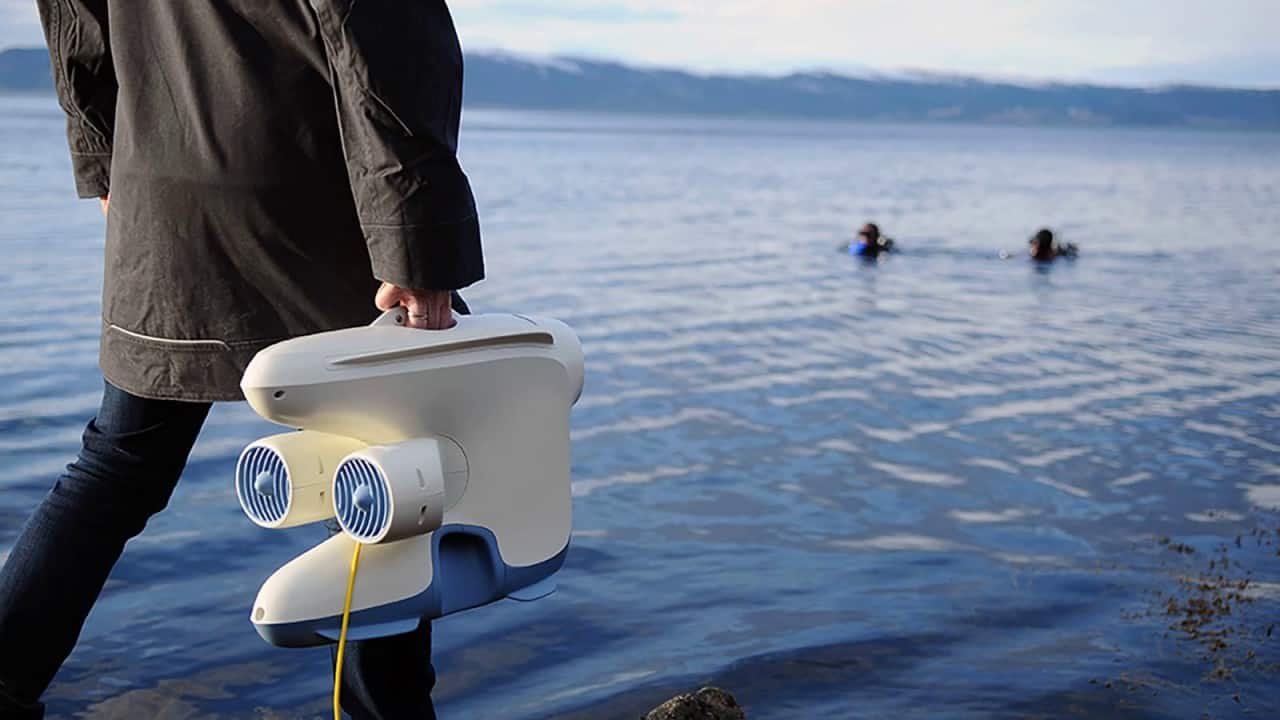









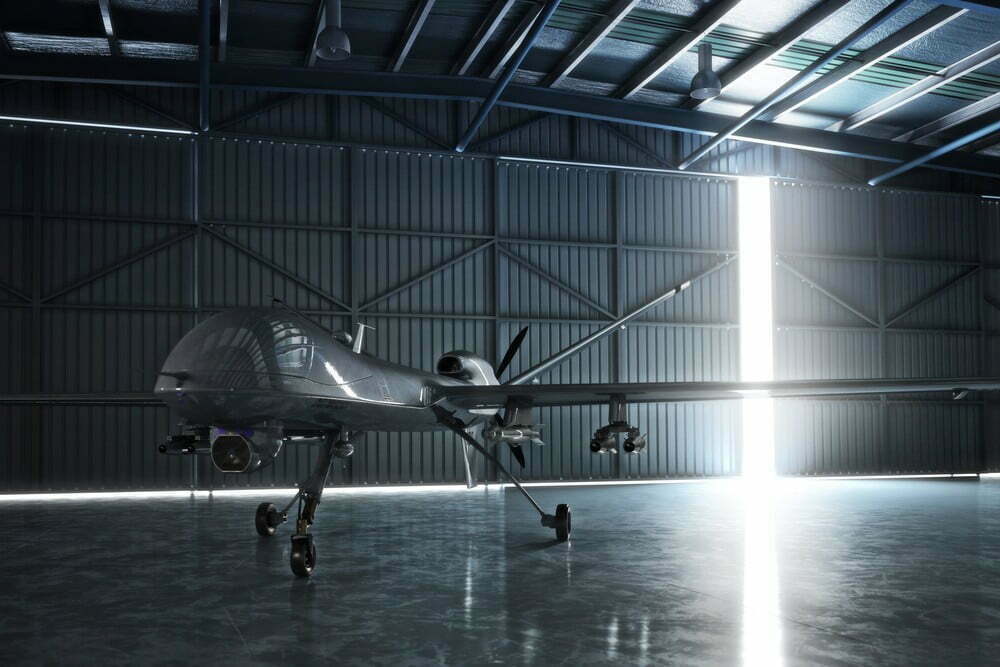
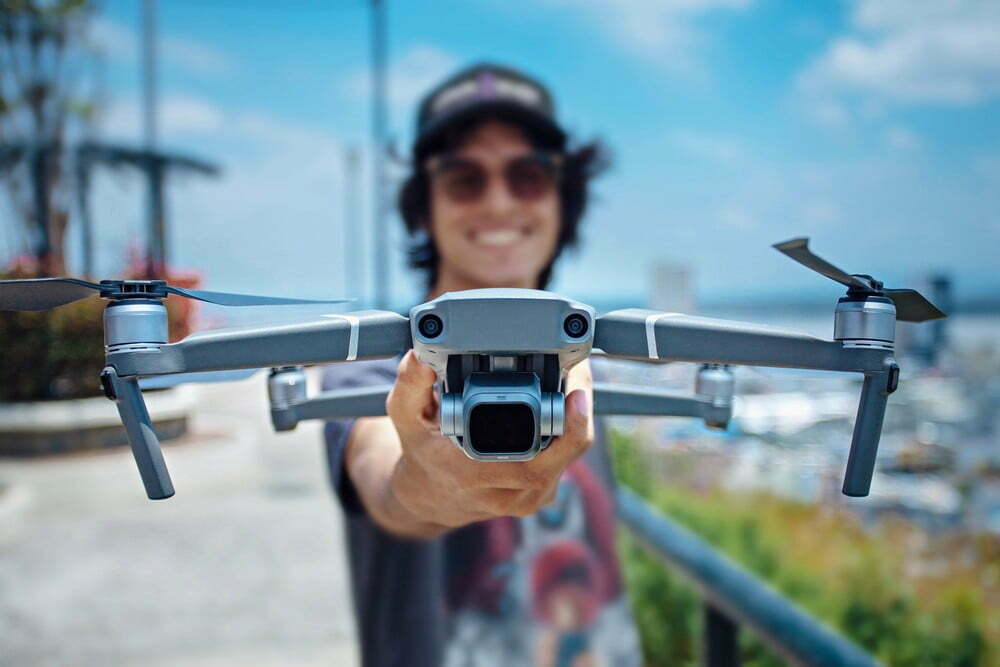
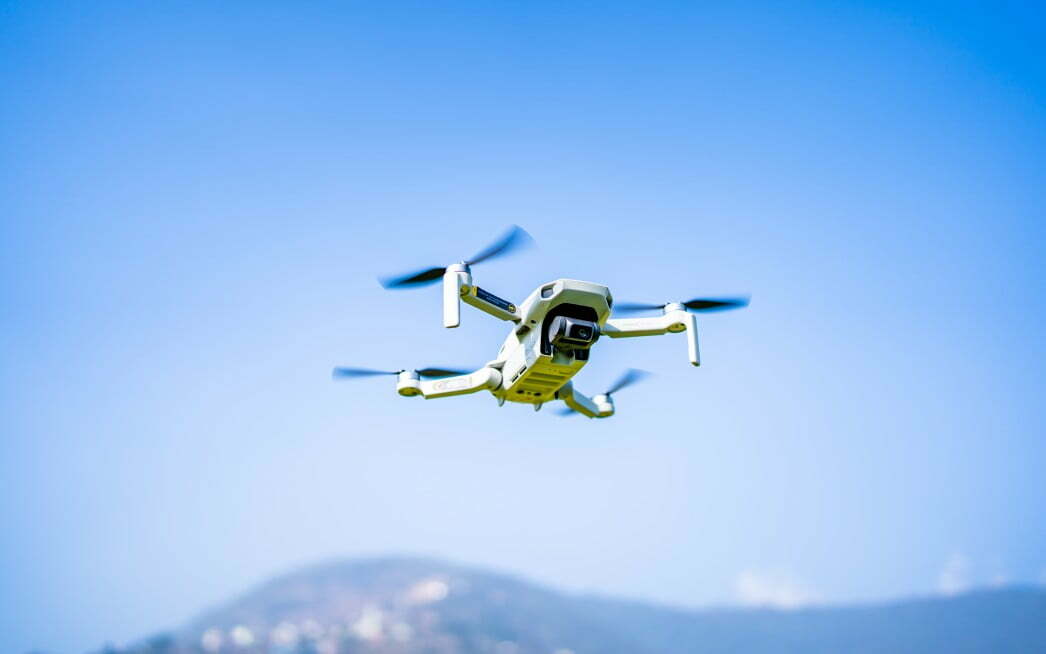
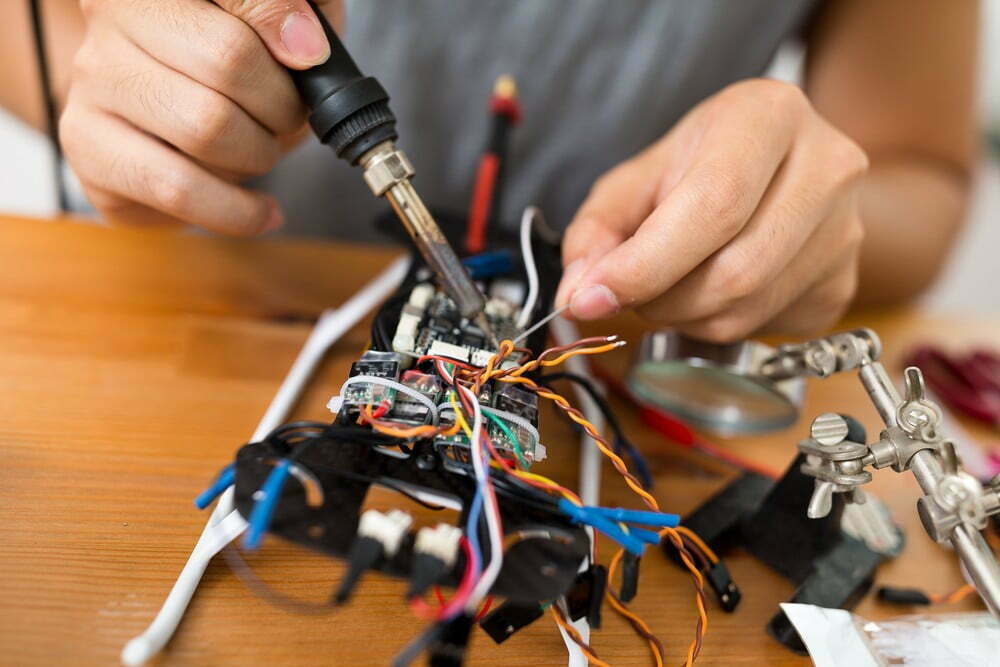
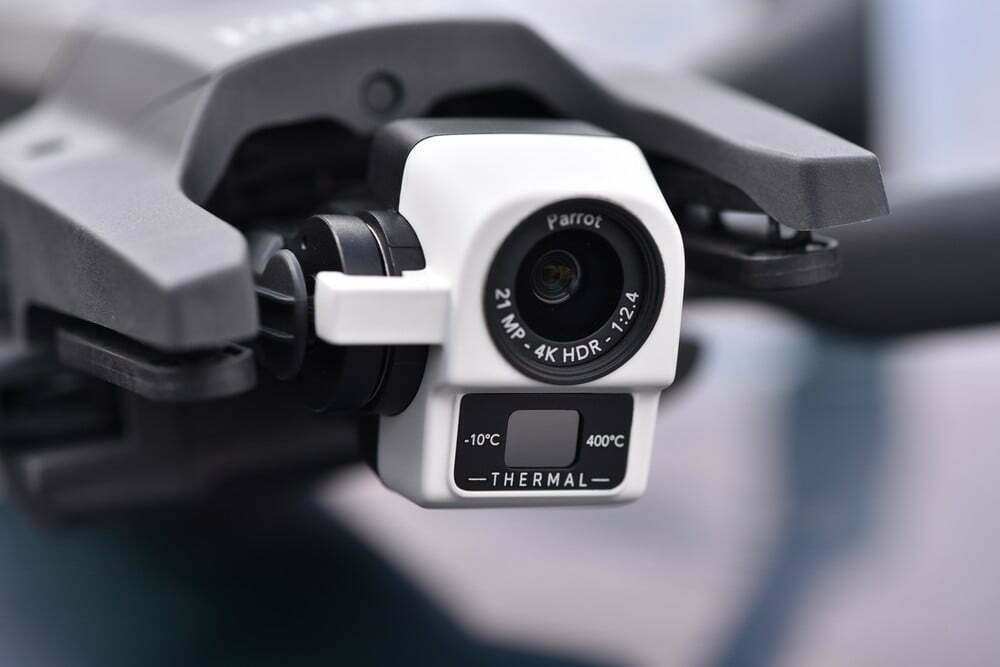
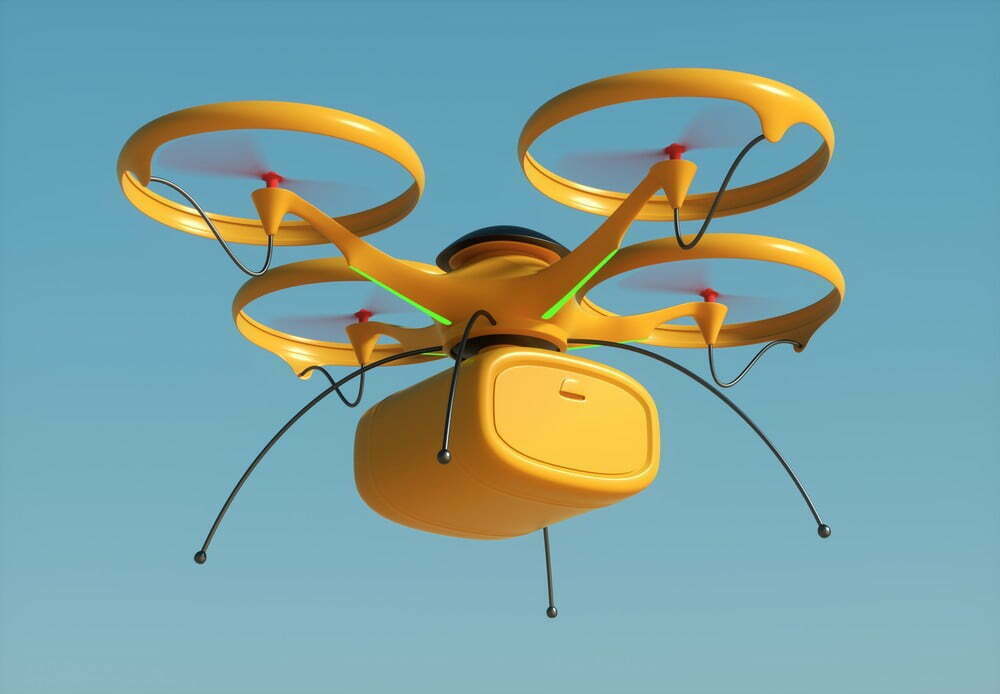
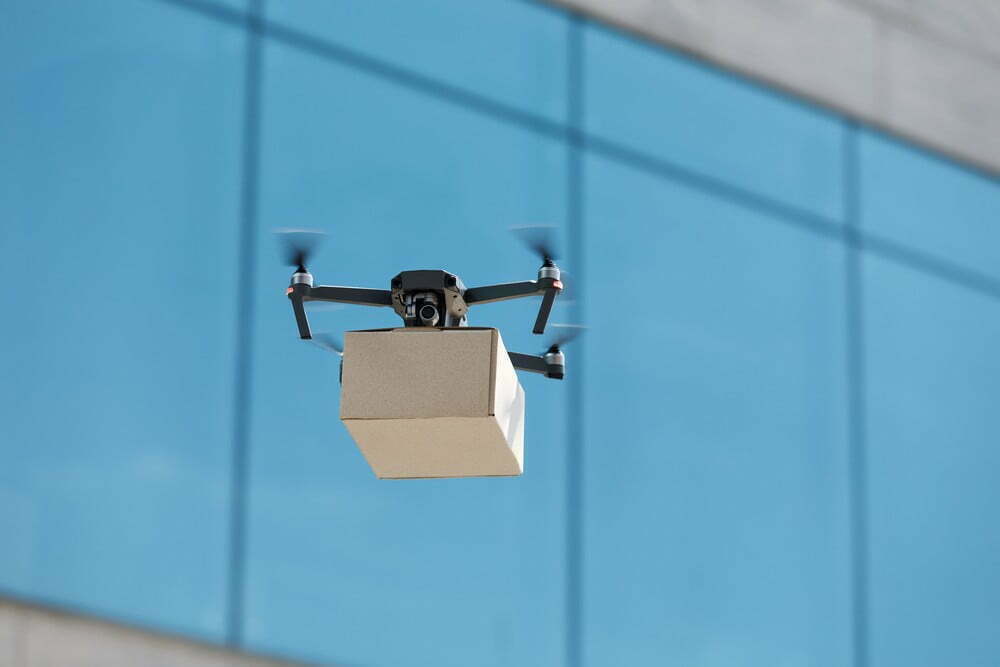
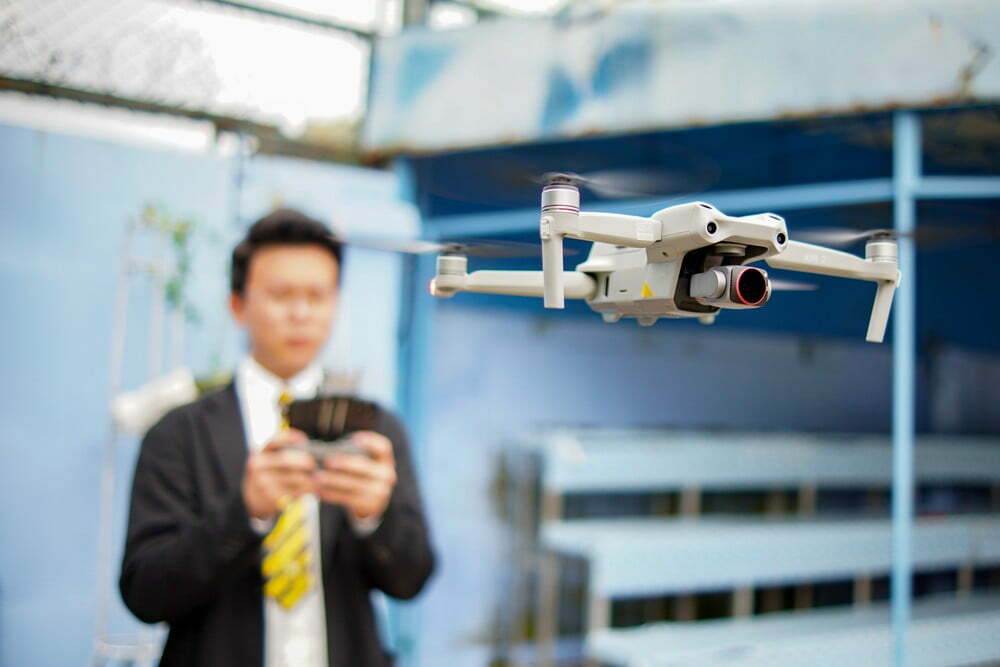
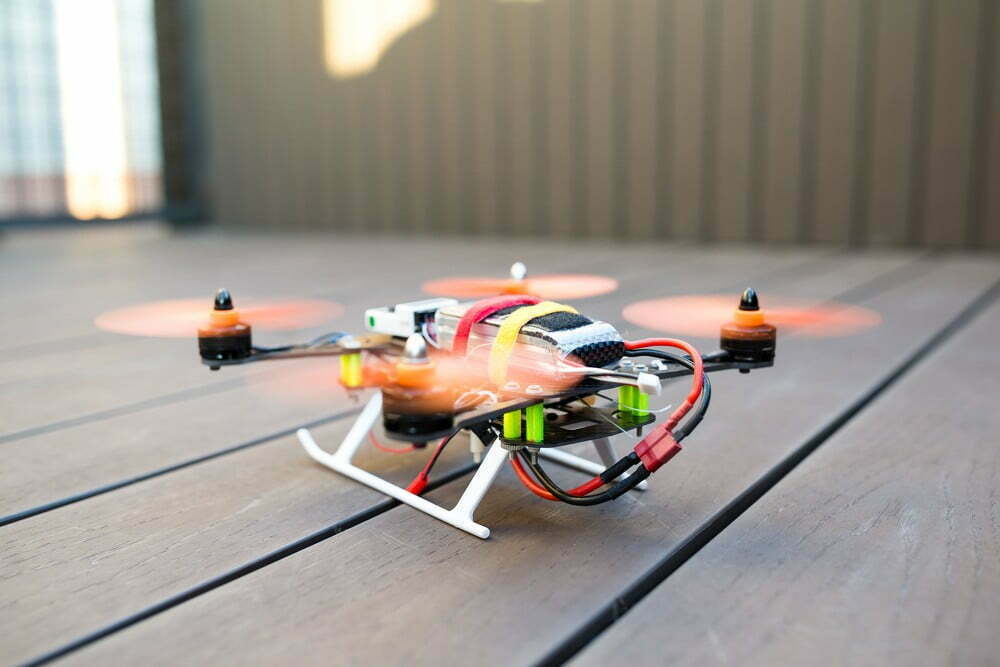
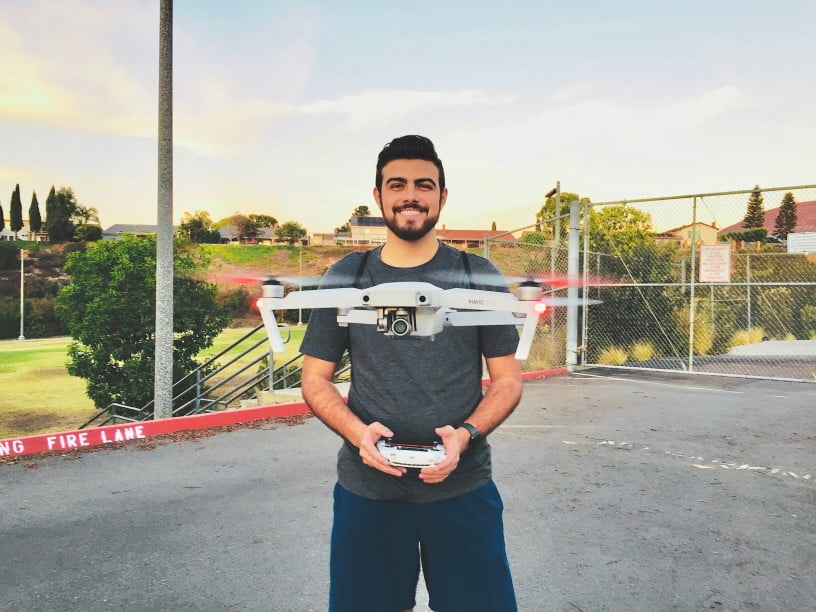
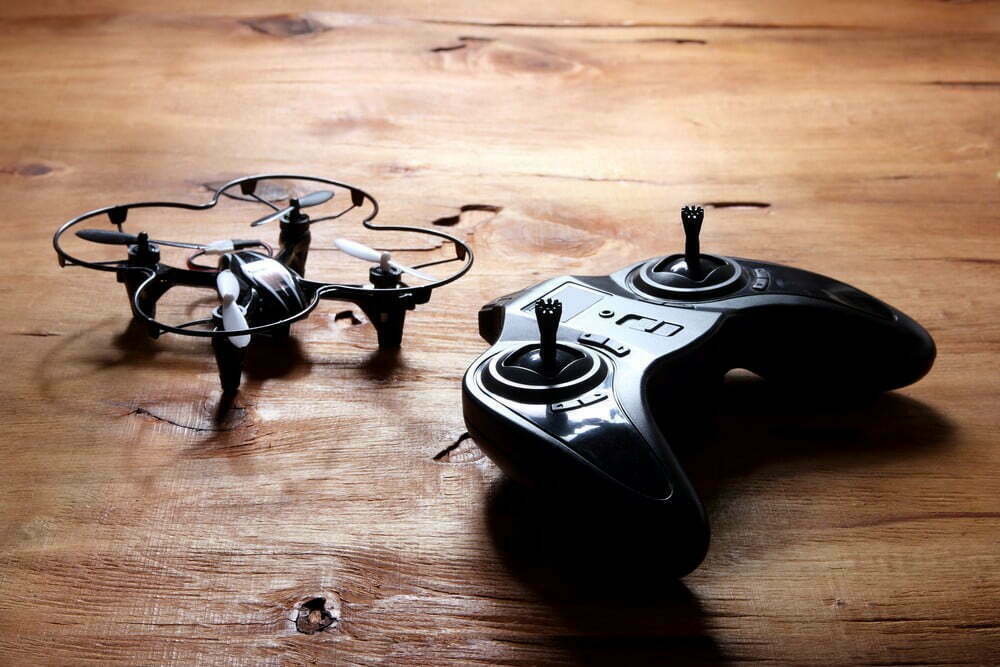
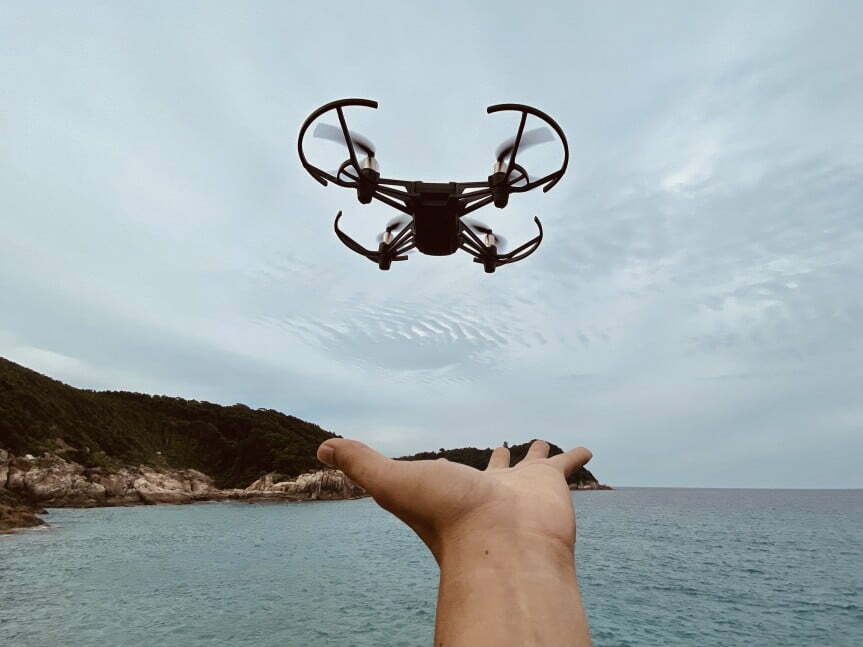
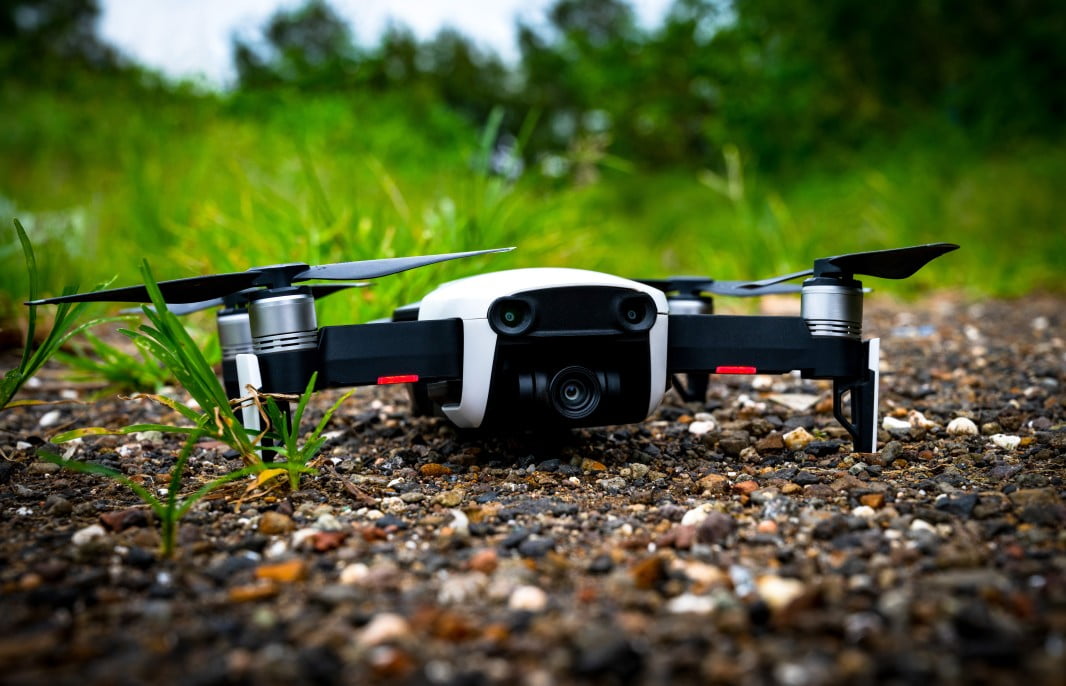
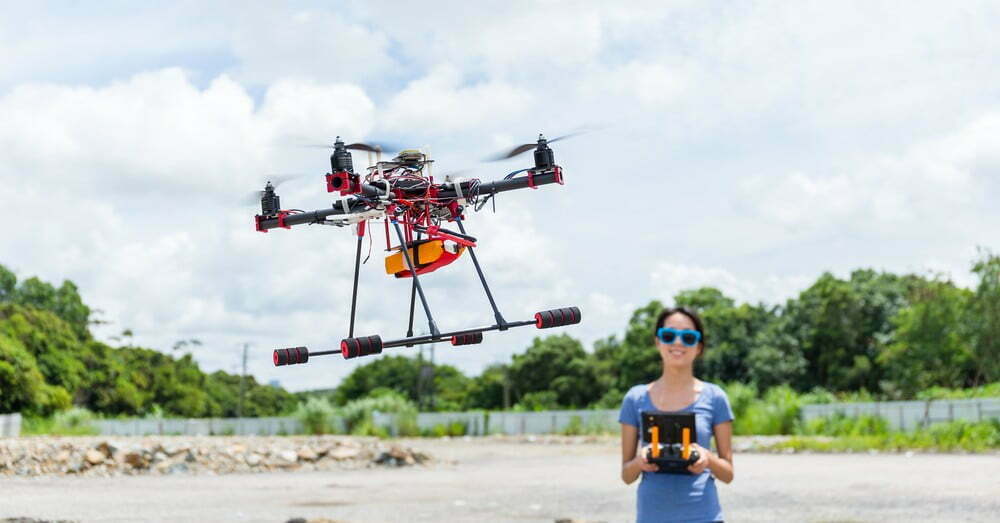
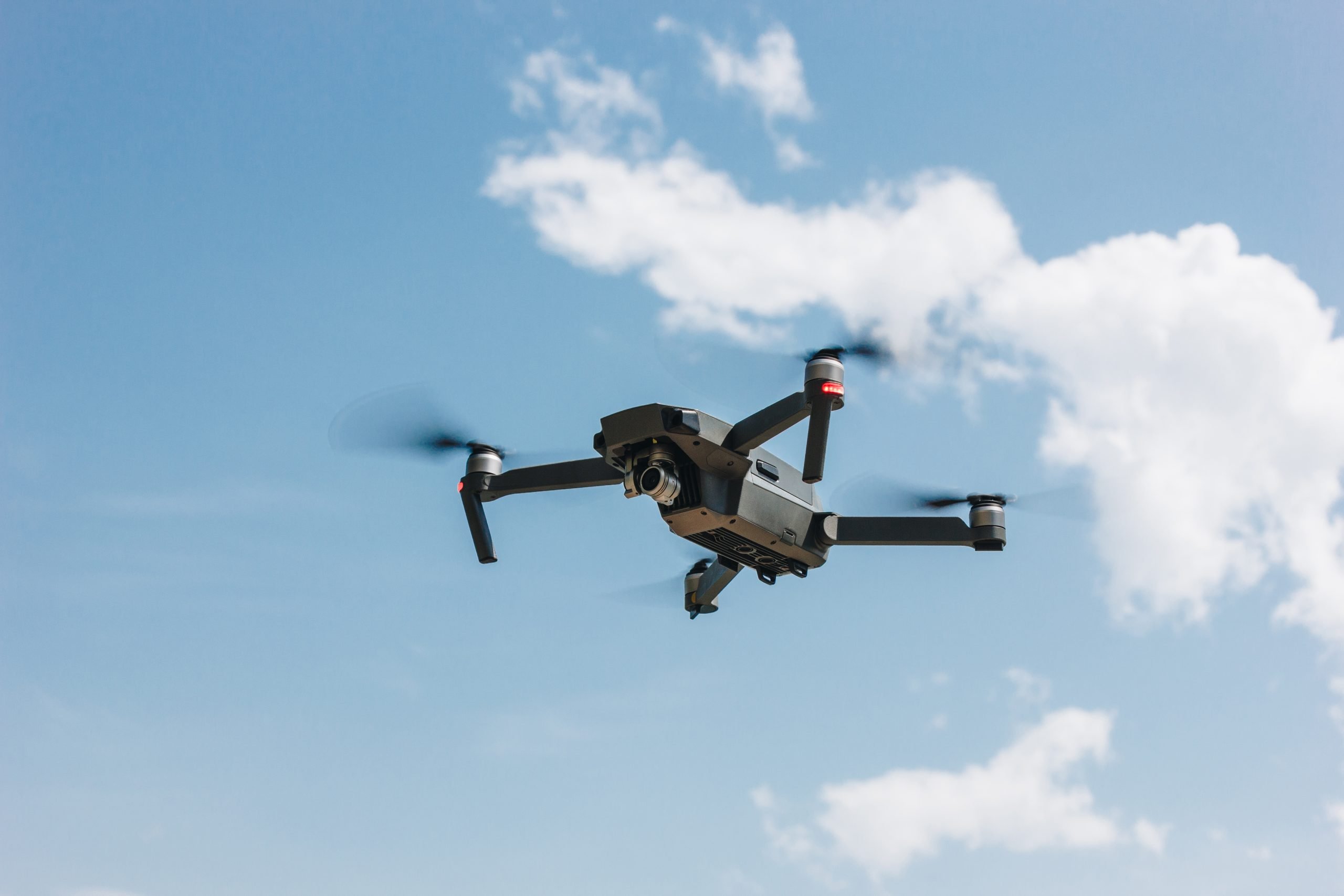
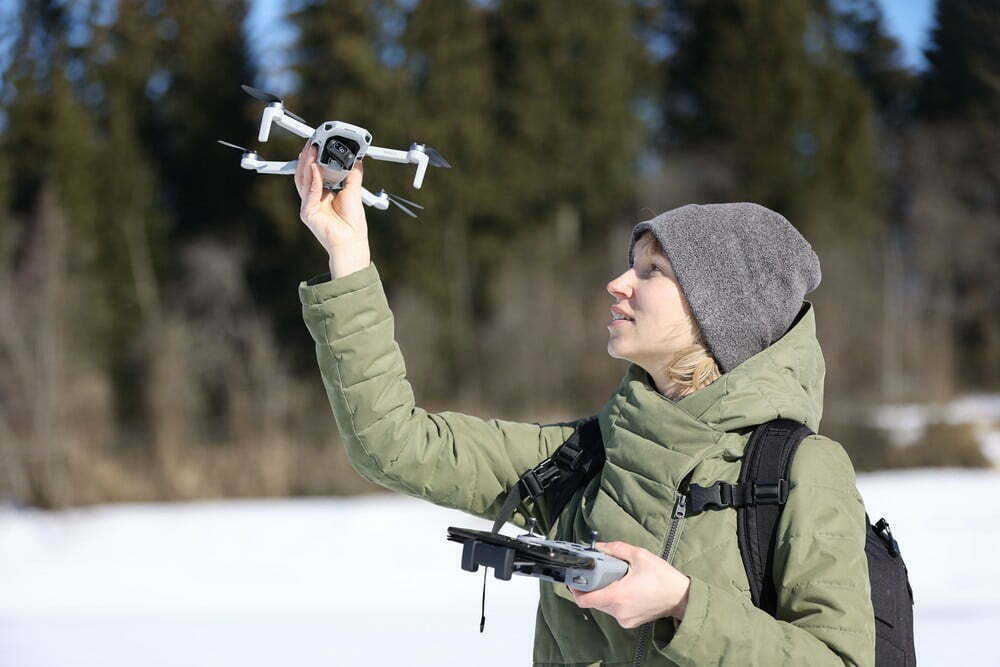
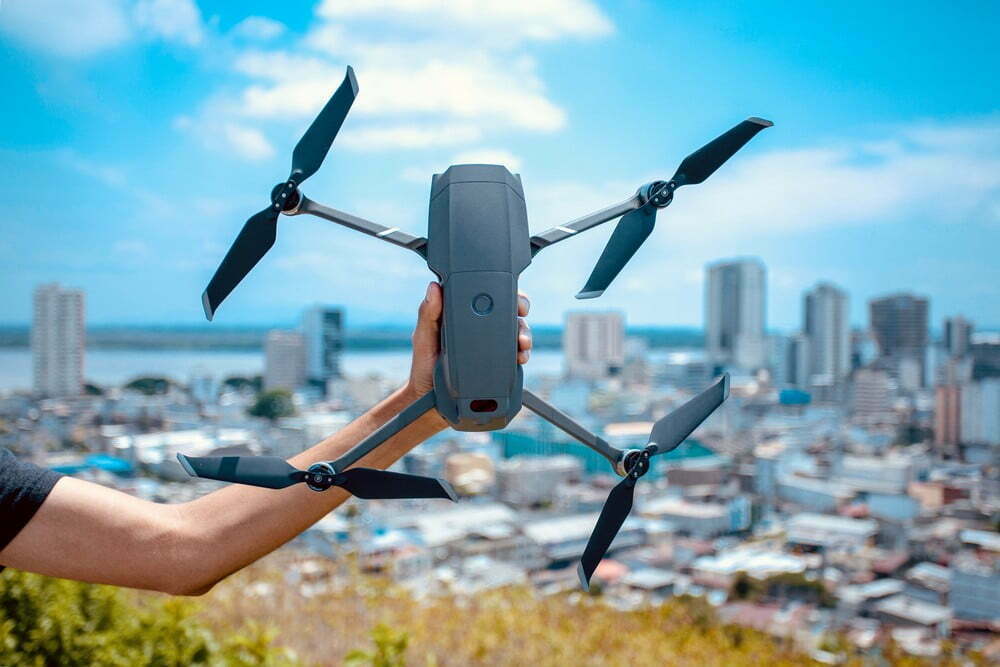
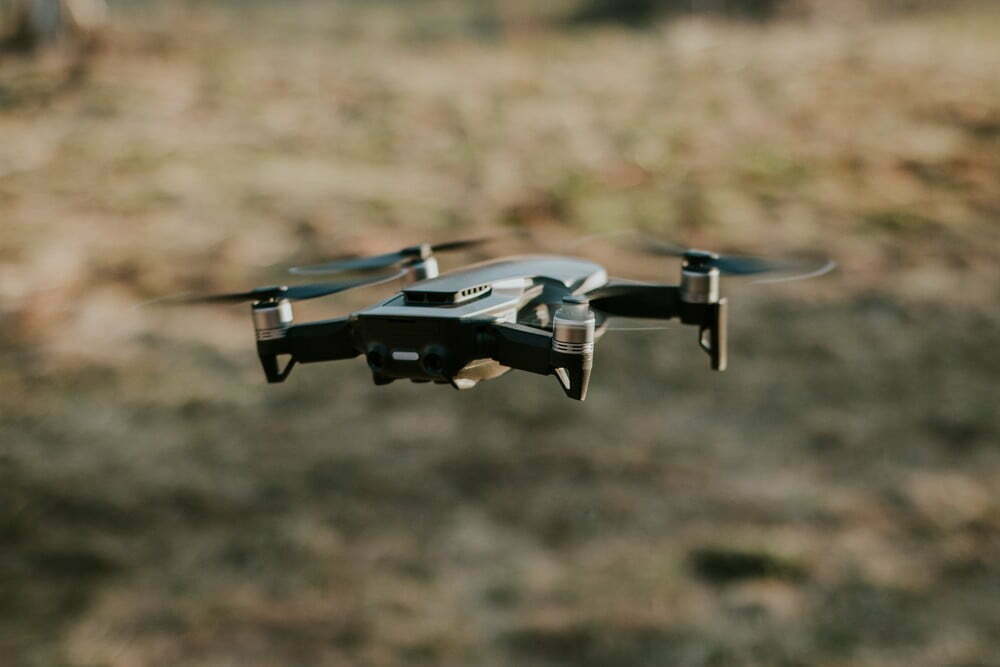
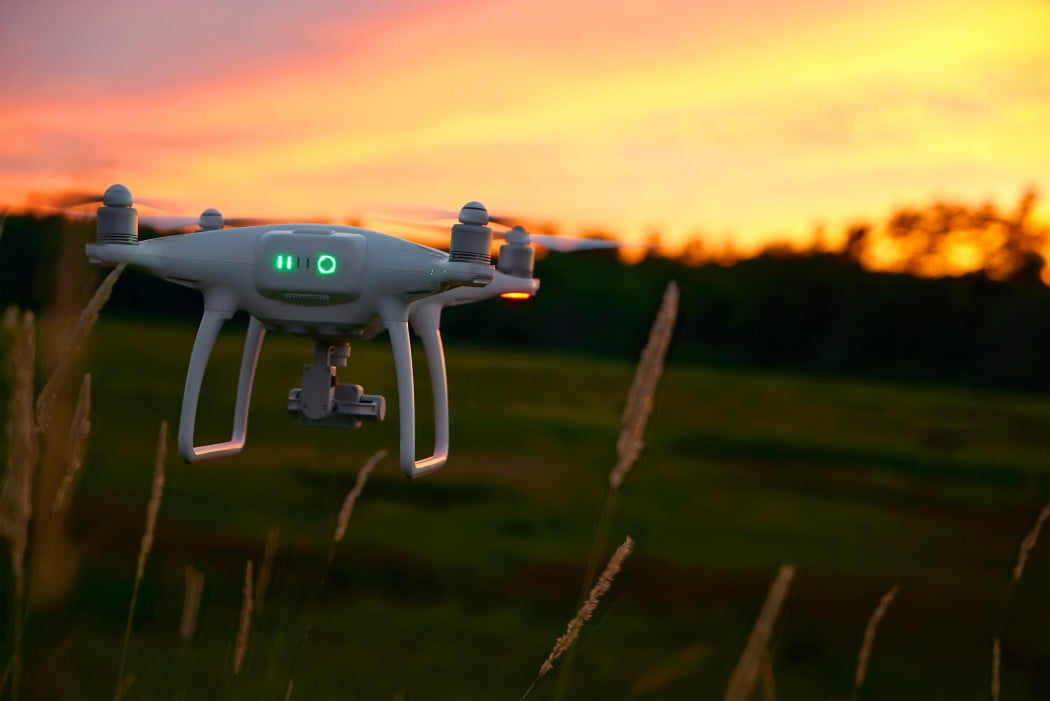
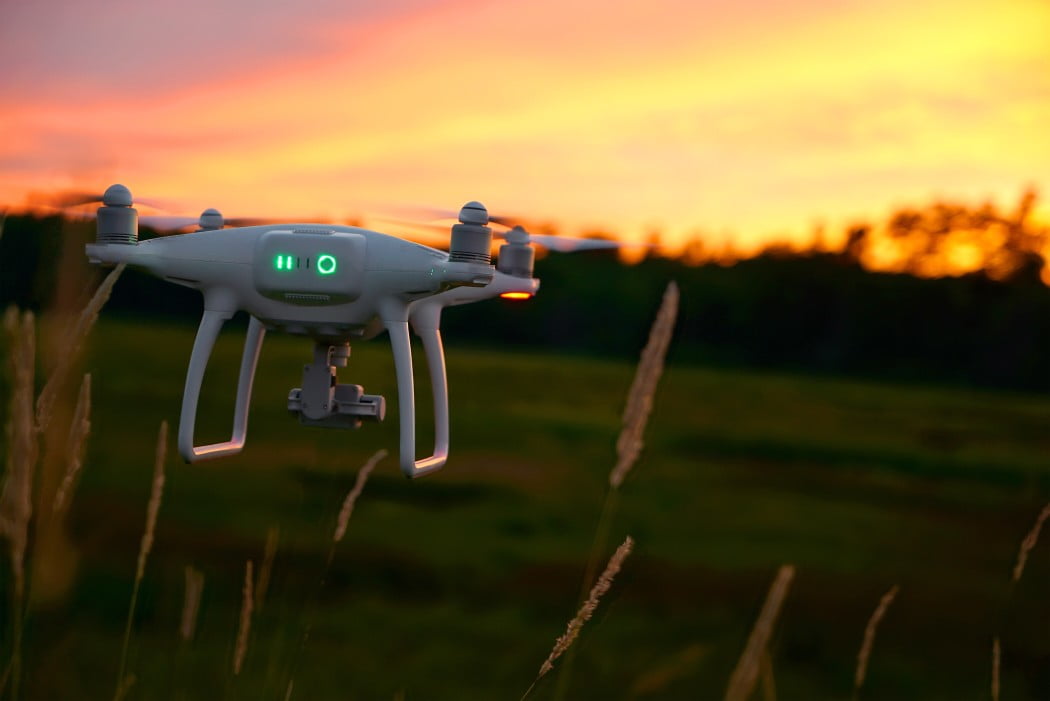
![Best Drones Under the Cost of Ferrari in [year] 32 Best Drones Under the Cost of Ferrari in 2025](https://www.gadgetreview.dev/wp-content/uploads/image-test-3.jpg)
![10 Best VR Drones in [year] 33 10 Best VR Drones in 2025](https://www.gadgetreview.dev/wp-content/uploads/Best-VR-Drone.jpg)
![10 Best Drones for Beginners in [year] 34 10 Best Drones for Beginners in 2025](https://www.gadgetreview.dev/wp-content/uploads/Best-Drones-for-Beginners.png)
![10 Best Indoor Drones in [year] 35 10 Best Indoor Drones in 2025](https://www.gadgetreview.dev/wp-content/uploads/Best-Indoor-Drone.jpeg)
![10 Best FPV Racing Drones in [year] 36 10 Best FPV Racing Drones in 2025](https://www.gadgetreview.dev/wp-content/uploads/Best-FPV-Racing-Drone-scaled-1.jpg)
![10 Best Selfie Drones in [year] 37 10 Best Selfie Drones in 2025](https://www.gadgetreview.dev/wp-content/uploads/Best-Selfie-Drones.jpg)
![10 Best Drones for GoPro in [year] 38 10 Best Drones for GoPro in 2025](https://www.gadgetreview.dev/wp-content/uploads/Best-Drone-for-GoPro-scaled-1.jpg)
![10 Best Drones for Kids in [year] 39 10 Best Drones for Kids in 2025](https://www.gadgetreview.dev/wp-content/uploads/Best-Drone-for-Kids-scaled-1.jpg)
![10 Best Professional Drones in [year] 40 10 Best Professional Drones in 2025](https://www.gadgetreview.dev/wp-content/uploads/Best-Professional-Drone.jpg)
![10 Best Fixed Wing Drones in [year] 41 10 Best Fixed Wing Drones in 2025](https://www.gadgetreview.dev/wp-content/uploads/Best-Fixed-Wing-Drone.jpg)
![10 Best Follow Me Drones in [year] 42 10 Best Follow Me Drones in 2025](https://www.gadgetreview.dev/wp-content/uploads/Best-Follow-Me-Drone.jpg)
![10 Best Foldable Drones in [year] 43 10 Best Foldable Drones in 2025](https://www.gadgetreview.dev/wp-content/uploads/best-foldable-drones.jpg)
![10 Best Drones for Travelling in [year] 44 10 Best Drones for Travelling in 2025](https://www.gadgetreview.dev/wp-content/uploads/best-drones-for-travelling.jpg)
